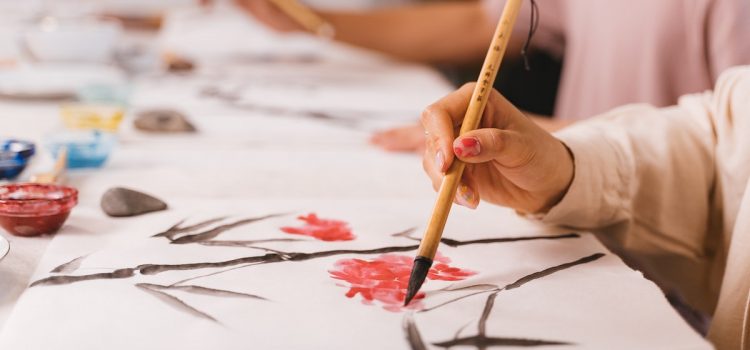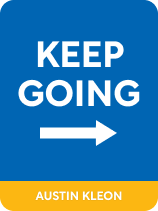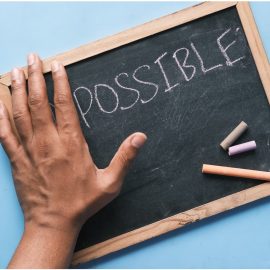

This article is an excerpt from the Shortform book guide to "Keep Going" by Austin Kleon. Shortform has the world's best summaries and analyses of books you should be reading.
Like this article? Sign up for a free trial here .
Do you want to live a creative life? How can you balance life and your creative endeavors?
In Keep Going, poet and visual artist Austin Kleon says that balancing life and creativity can increase positivity in your life. To live a creative life, he provides three methods for you to follow: choosing life over creative work, embracing change, and accepting where you are.
Continue reading to learn the key to living a creative life.
How to Live a Creative Life
Kleon talks about the interaction between creativity and life as a whole and how you can live a creative life that is healthy. This interaction is important because one benefits the other:
- A healthy life keeps you motivated and interested in your creative work, preventing burnout or feeling overwhelmed.
- Healthy creative work makes your life and the lives of others more positive by providing emotional or intellectual inspiration.
(Shortform note: Psychological research supports Kleon’s argument that your overall lifestyle and creativity impact each other. One study showed that higher creativity correlated with higher “intrinsic motivation” in life: wanting to do things out of love for the action itself. Based on this and other studies, some psychologists argue that actively working to stimulate creativity throughout your life is crucial for finding meaning or purpose in the things you do.)
Kleon provides three methods for living a creative life: choosing life over creative work, embracing change, and accepting where you are.
Method #1: Choose Life Over Creative Work
To ensure healthy interaction between your creativity and your life at large, Kleon says you have to choose a healthy life over good creative work. Art should have a net positive impact on the world, both in how it affects others and in how it affects its creator. He specifically argues against the idea of a “tortured artist”—someone who causes suffering to themselves or the people around them in pursuit of creative work. Being a good and ethical human being is more important than making quality creative work.
(Shortform note: You might be wondering what it means to make creative work that has a “net positive impact” on the world. Elizabeth Gilbert (Big Magic) clarifies what this positive impact might look like: She argues that you shouldn’t feel like your creative work has to help other people—art that’s true to your experience is worthy, even if it doesn’t lead to concrete change. From this perspective, the positive impact of creative work can be entirely personal.)
Method #2: Embrace Change
To stimulate creativity, you have to be willing to embrace, confront, or accept new ideas in your life. By opening yourself up to the option of changing your mind or understanding alternative perspectives, you’ll also be more open to new creative ideas and experiences.
Embrace change in your life by talking to people with opinions and life experiences that differ from your own. Be aware that doing this in a productive way requires engaging with people who recognize your good intentions and don’t judge you for your ideas—otherwise, you won’t feel comfortable or open to new perspectives and experiences. To find alternative opinions productively, Kleon suggests talking to people who disagree with you but still respect you and want to hear what you have to say.
(Shortform note: The idea of being open to changing your values might make you uncomfortable—Mark Manson (The Subtle Art of Not Giving a F*ck) suggests that this discomfort is a necessary part of the process. Being open to change, says Manson, requires confronting uncertainty about what you believe in and facing potential pushback from people around you who don’t share your new values. So take comfort in your discomfort—it’s a sign that you’re on the right track.)
Method #3: Accept Where You Are
You can’t control how and when you’re creative, explains Kleon—you just have to learn to accept where your head is, creatively speaking. Everyone encounters and experiences creativity differently—don’t judge yourself as a failure if you go through a creative dry spell or don’t become wildly successful at a young age. Judging yourself when you’re not at your creative best means you’ll regularly suffer feelings of inadequacy.
To accept where you are, Kleon suggests that you learn to recognize the times in a day, week, month, or year when you are or are not creative. Then, you can work with those creative rhythms instead of judging them as “wrong” or “not good enough.” Persist, don’t get discouraged, and keep going.
(Shortform note: For practical advice on creative acceptance, Elizabeth Gilbert (Big Magic) suggests that you actually speak out loud about your right to make art. Simply saying, “I am an artist,” or, “I am a writer” acts as a helpful reminder that you can and do make creative work—which is useful for times when you feel discouraged or insecure.)

———End of Preview———
Like what you just read? Read the rest of the world's best book summary and analysis of Austin Kleon's "Keep Going" at Shortform .
Here's what you'll find in our full Keep Going summary :
- How to stay creative even when you feel stressed or burnt out
- Why the process of making art is more important than the outcome
- Why and how to make a creative space to work in






